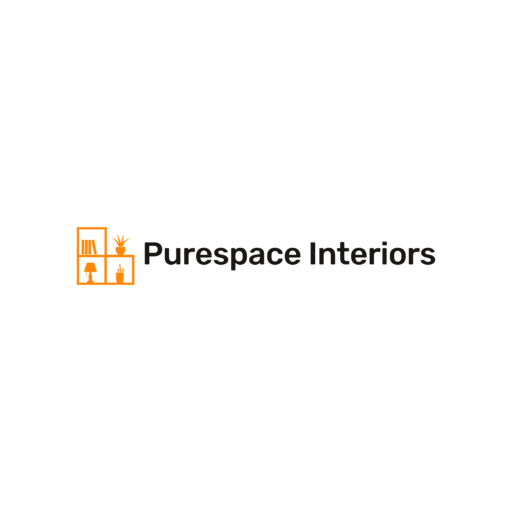Moduler Kitchen
The kitchen is the heart of the home—a place where function, style, and comfort meet. At Purespace interiors, we specialize in designing modular kitchens that are not only efficient and practical but also beautiful and tailored to your unique lifestyle. Our expert team combines innovative design solutions with high-quality materials to create kitchens that enhance the way you live, cook, and entertain.
Our Moduler Kitchen gallery






The Ultimate Guide to Modular Kitchen Design: Functional, Stylish, and Efficient
A modular kitchen is a modern, efficient, and highly customizable design concept that has become increasingly popular in contemporary homes. It allows homeowners to create a kitchen that not only meets their functional needs but also reflects their personal style. With modular units, the kitchen becomes more organized, streamlined, and easy to maintain. This guide will walk you through the essential elements of modular kitchen design, offering tips on how to maximize space, choose the right materials, and create a stylish yet practical kitchen.
1. Understanding Modular Kitchen Design
A modular kitchen is a pre-designed kitchen with interchangeable units that can be customized to fit the available space. These units are built off-site in standard sizes and then assembled in the kitchen. The modular concept allows for maximum flexibility in terms of layout, storage, and design, and it’s ideal for both small and large kitchens.
Key Features of Modular Kitchens:
- Pre-designed Units: Cabinet modules, shelves, and drawers are designed in standard sizes for easy assembly.
- Customization: While the basic structure is modular, the design can be tailored to suit your space and style preferences.
- Optimized Storage: Modular kitchens often incorporate smart storage solutions, such as pull-out drawers, lazy Susans, and vertical racks.
- Easy Installation: The ready-made units are simple to install and require minimal modification to the existing kitchen structure.
2. Choosing the Right Layout for Your Kitchen
The layout is one of the most important aspects of designing a modular kitchen. The layout determines how efficient the kitchen is in terms of work flow, ergonomics, and storage.
Popular Kitchen Layouts:
- L-Shaped Layout: Ideal for small to medium-sized kitchens. The L-shaped layout creates a natural working triangle, with the fridge, sink, and stove in close proximity to one another.
- U-Shaped Layout: Best for larger kitchens, the U-shaped layout offers extensive counter space and allows for more storage options. It’s perfect for those who enjoy cooking and need space for meal prep.
- Island Kitchen: A trendy layout that incorporates a central island, providing extra counter space, storage, and sometimes even seating. It works well in open-plan homes.
- Parallel Kitchen: A linear layout with cabinets on opposite walls, ideal for narrow kitchens. It’s great for creating a functional kitchen triangle while saving space.
- Peninsular Kitchen: Similar to the island layout, but the island is attached to one side, creating an open space that works well for larger kitchens or open-plan homes.
3. Maximizing Storage with Modular Units
One of the biggest advantages of a modular kitchen is its ability to maximize storage. With thoughtful design, modular units can make even the smallest kitchen feel spacious and organized.
Smart Storage Solutions:
- Pull-Out Drawers: These drawers are perfect for storing utensils, pots, pans, or even pantry items. They maximize space and offer easy access to everything you need.
- Lazy Susan: A rotating shelf that helps you access items stored in corner cabinets more easily. It’s a great way to utilize deep, hard-to-reach corners.
- Tall Cabinets: Vertical storage helps you store bulky items and makes use of the vertical space in your kitchen, especially in areas with high ceilings.
- Pull-Out Pantries: A pull-out pantry is an excellent option for storing dry goods and spices in a narrow space. These can be customized to fit the exact dimensions of your kitchen.
- Drawer Dividers and Inserts: For more organized storage, use drawer dividers or custom inserts to keep your utensils, cutlery, and tools neatly arranged.
4. Selecting Materials and Finishes
Choosing the right materials and finishes for your modular kitchen is essential to ensure durability, ease of maintenance, and overall aesthetics. Modular kitchens offer a wide variety of materials for countertops, cabinets, and flooring.
Materials for Cabinets:
- MDF (Medium Density Fiberboard): MDF is a popular material for kitchen cabinets because it’s durable, cost-effective, and can be painted or laminated in a variety of finishes.
- Plywood: More durable and resistant to moisture than MDF, plywood is a great choice for kitchens that see heavy use.
- Particleboard: A more budget-friendly option, particleboard is commonly used for modular kitchen cabinets. However, it may not be as long-lasting as plywood or MDF.
- Wood Veneer: For a natural look, wood veneer offers the warmth and beauty of real wood but is lighter and more affordable.
Countertop Materials:
- Granite: Known for its durability and elegance, granite is a timeless choice for kitchen countertops.
- Quartz: A low-maintenance and highly durable material, quartz comes in a wide range of colors and patterns, making it a popular choice for modern kitchens.
- Marble: For a luxurious and sophisticated look, marble countertops offer stunning veining and appeal. However, they require regular maintenance.
- Laminate: An affordable option, laminate countertops are available in a variety of colors and finishes. They may not be as durable as natural stone options but are easy to clean and maintain.
Backsplashes and Flooring:
- Ceramic or Porcelain Tiles: Easy to clean and available in a wide variety of styles, tiles are a classic choice for kitchen backsplashes and flooring.
- Glass: Glass backsplashes add a sleek, modern touch to a kitchen and are easy to maintain. They can be customized with various colors or designs.
- Wood: Hardwood floors add warmth and character to the kitchen but may require more maintenance compared to tile or stone options.
